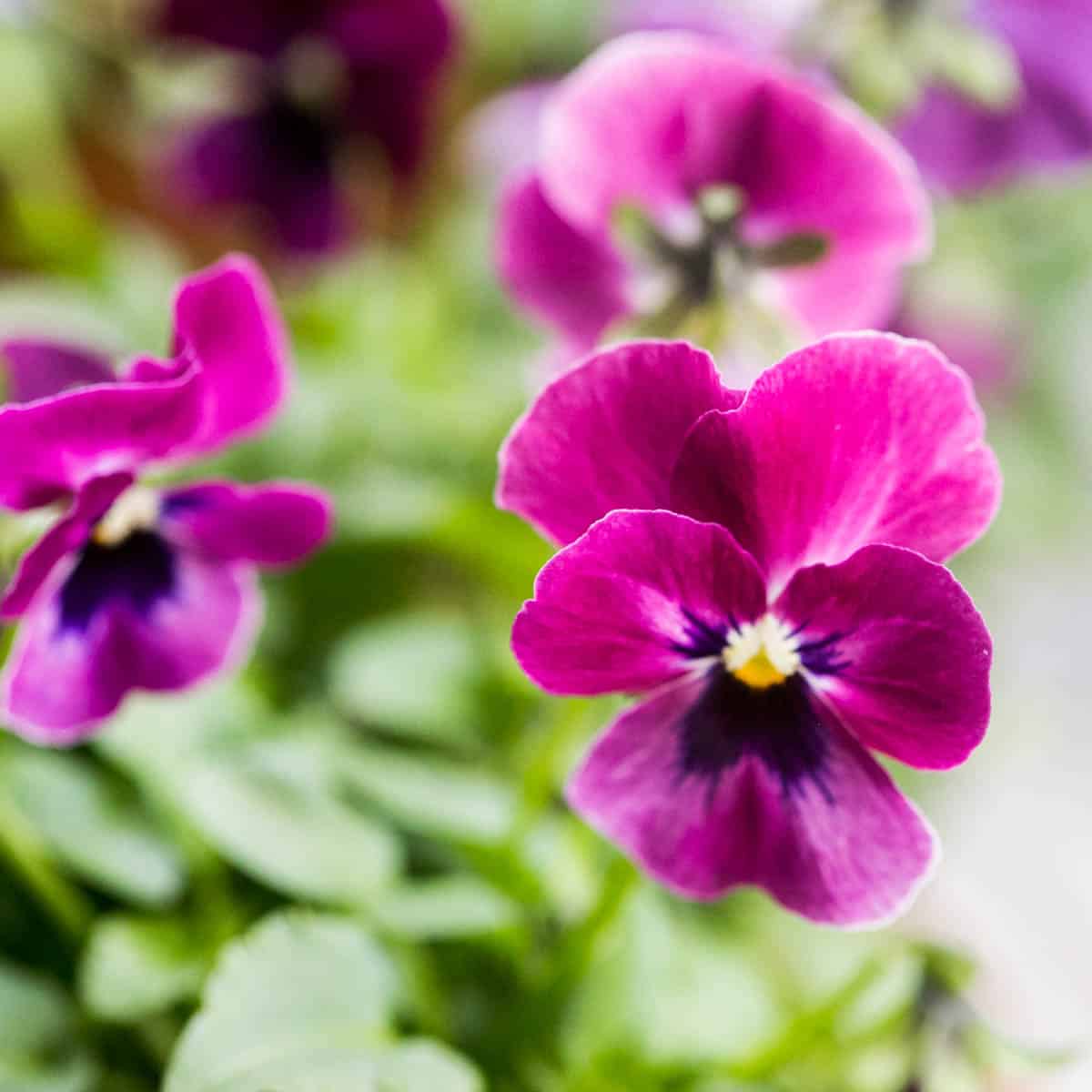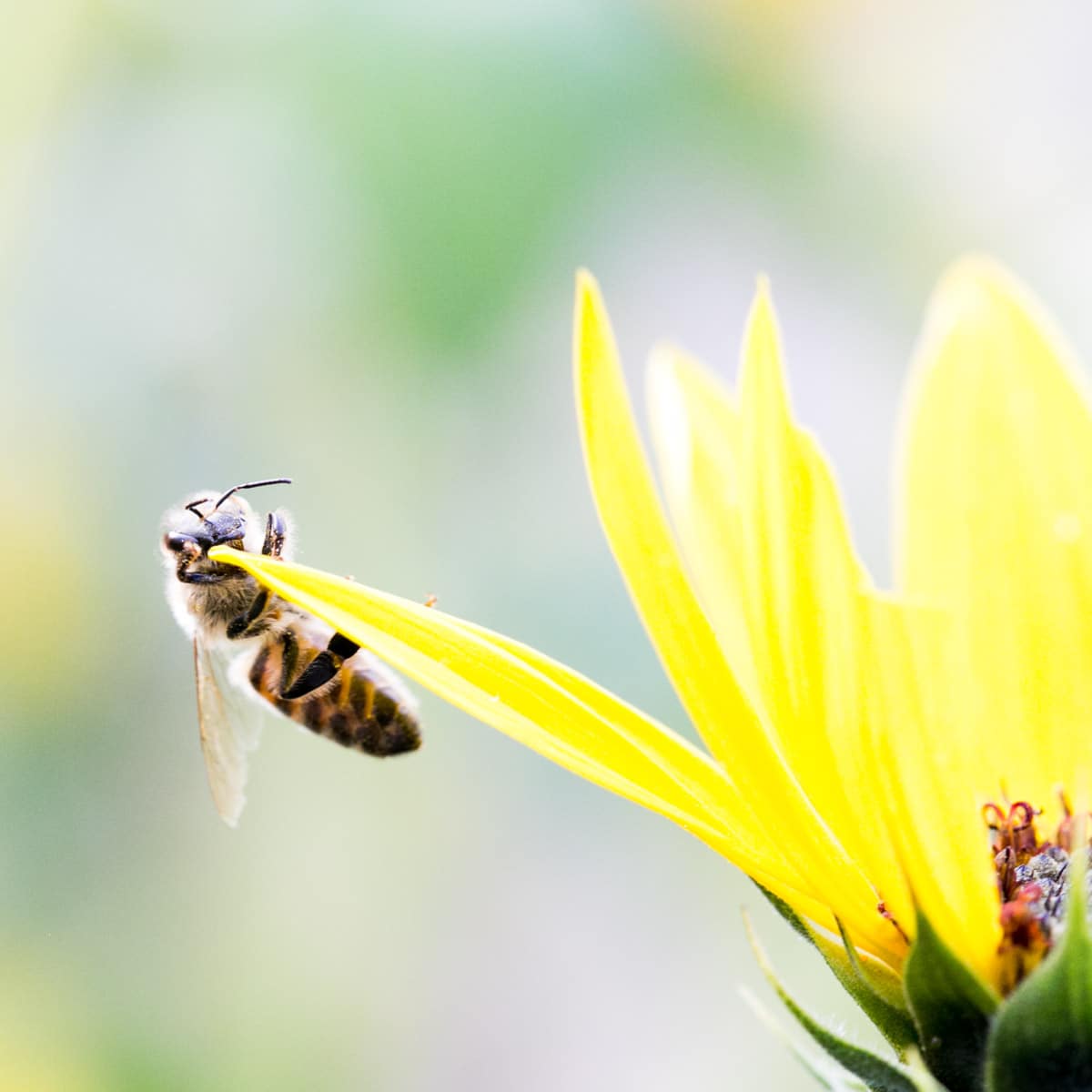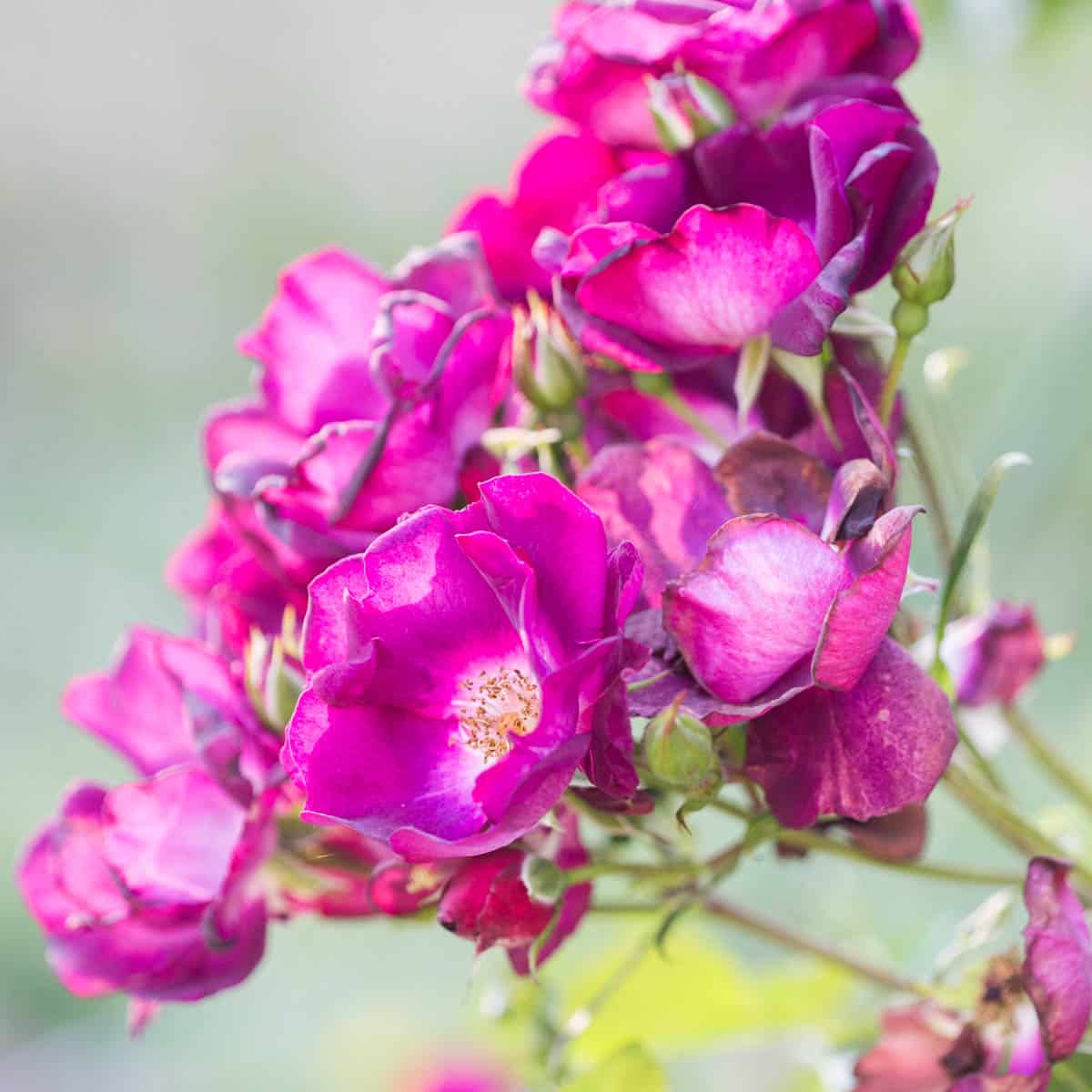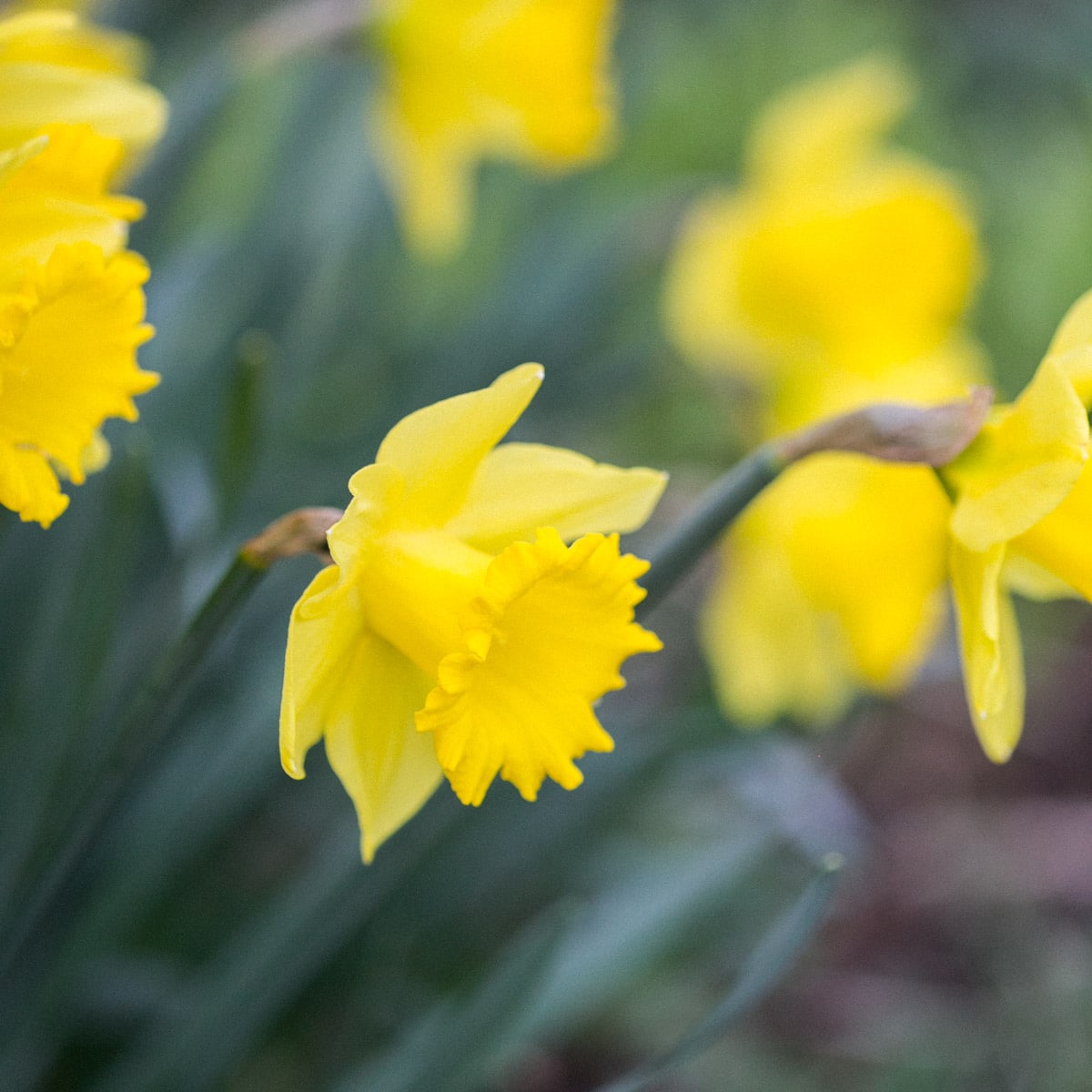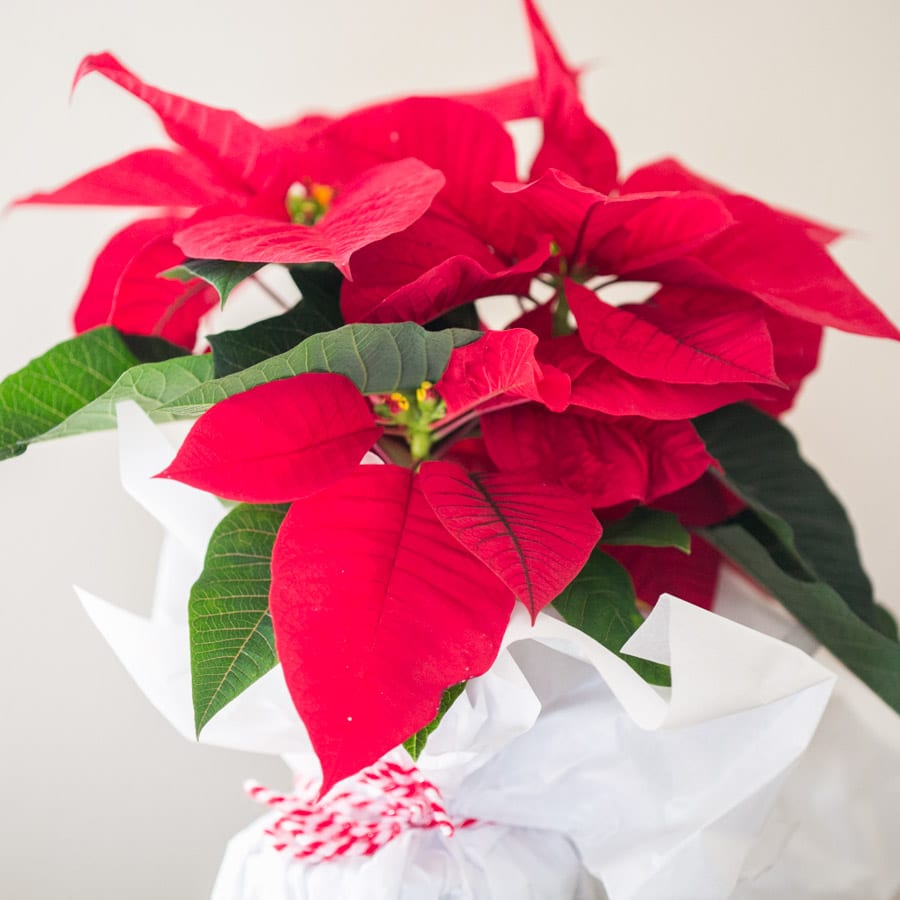How Often To Water Chrysanthemums? (Best Care Tips)
Learn how often to water chrysanthemums- and the right way to do it!
Chrysanthemums bring a beautiful burst of color in the fall season. As a true autumn flower, the bold flowers accent the season perfectly and enhance those cozy fall vibes.
But the wrong watering technique can affect the new growth of flower blooms and even cause them to drop off!

Read on to learn how to properly water chrysanthemums and give them proper care so they thrive!
How Often To Water Chrysanthemums
Potted mums (also known as florist mums or floral mums), need to be checked for dryness each day. During warm weather, they need to be watered daily.
Chrysanthemums that are growing in the ground need less water than potted mums, but they also enjoy regularly watering. Chrysanthemums growing in the ground need to be watered before the soil goes completely dry.
Mums love water and need consistently moist soil in which to grow. This soil must be well-draining, however, or the plants will develop root rot or other diseases.

Avoid letting your plants dry out and get wilted. Mums have a shallow root system and need a lot of water in order to thrive!
Proper care when watering is VERY important-do not get the flowers wet when watering mums, or they will rot.
Both over watering and under watering your chrysanthemums can cause problems, so keep reading to learn how to properly water your plant.
Did you know? Chrysanthemums are available in hundreds of different colors and shades. These beautiful flowers are not deer resistant and need to be protected from being eaten.
Did you known snapdragons will also bloom in cooler fall weather? Read about them here!
How often do you water mums in the ground?
Mums are not drought tolerant and need frequent, regular watering.
Hardy mums can be grown as a perennial in the ground and need to be given enough water to thrive, but not so much that they develop root rot or other fungal disease.
Give the plant moist soil, but do not allow swampy, mud like conditions. Too much moisture is just as damaging as too little, and well-drained soil is a must to prevent root rot. Do not wait for the plant to droop before you water it, and avoid waiting for the soil to completely dry out. They need approximately one inch of water per week.
The local climate, how much sun received, and specific weather conditions will determine when to water the plant. During warm temperatures water the mum more frequently.

Water the plant deeply to encourage the formation of a good root system. Deep watering encourages the plant’s roots to stretch deeply for the soil and become stronger.
Always water at the base of the plant, and avoid watering the flower buds-or they will rot and fall off!
For best results, pay attention to your specific climate. Fall temperatures can be surprisingly hot in certain zones!
The best time to water mums is in the early morning, before the heat of the day kicks in. Watering at night can encourage mold, fungus and rot.

Get the best beginner’s guide to flower gardening here!
Watering Mums In Pots + Containers
Many people purchase annual mums in pots to enjoy in fall. Here is how to water them.
The mum plant will often need a deep drink every morning, especially in late summer or early fall when temperatures are still warm. Mums grown in pots and containers need more frequent watering than mums grown in the ground. Check the soil daily in warm weather.
During the flowering period avoid watering the buds. Excess water on the flowers will cause the buds to rot and fall off.
To see if potted mums need watered, pick up the container and see how heavy or light the potted plant is. If it is heavy, don’t water it. If it feels light, it needs water! You can also stick your finger into the soil to see how moist the top few inches are. If you find dry soil, water the plant.
When the mum is in partial shade, it will need less water. If the mum is kept in full sun, it will probably be watered every day.

Drainage holes in pots are extremely important for potted mums. If the water cannot drain from the mum’s roots, it will build up and cause root rot. If you receive a mum as a gift check on the bottom of the pot and look for drainage holes! Mums are often wrapped in decorative paper and this will need to be peeled off so the bottom of the pot can be inspected.
Cool temperatures and excess heat will also effect how much water the potted plant needs.
Indoor mums can be a popular fall decoration. Indoor plants can be watered with the same approach: check the soil daily and water when dry (you may want to do this over the sink!).
Remember, both over watering and under watering mums can cause problems for the plant. Keep a close eye on the weight of the pot or the soil moisture. Mums in pots and containers will often need daily watering.

How To Water
Water mums at the base of the plant and avoid getting water on the flower blooms and leaves.
This will prevent fungal disease like powdery mildew from forming on the plant, and protect the plant’s flower blooms.
The best way to do this is to use a gentle water hose head and direct it under the plant near it’s root systems.
Apply the hose under the leaves on the soil surface and soak, making sure to water the soil of the entire plant. (Not just one spot).
IMPORTANT: The flower blossoms on chrysanthemums will actually rot if water sits on them. This will affect the flower development and you will lose flowers! Make sure to always water at soil level and be gentle when watering as the flowers are fragile.
How To Improve Soil For Better Drainage
A mum plant needs great soil drainage to thrive.
When potted, these beautiful bloomers thrive in fresh potting soil, which usually has enough drainage. To improve the soil drainage in the ground add in composted manure, decaying leaves, or other organic matter.
Add a layer of mulch in the form or rock or gravel at soil level to encourage drainage.
Watering New Plants
When caring for newly planted mums water the plant each day until established, unless the temperatures are cool or it is raining. (Again, watch the soil moisture).

What Do Overwatered Chrysanthemums Look Like?
While mums need good drainage and lots of water, they can be overwatered if proer care is not used.
An over watered mum will look wilted in appearance, which can be confusing! The leaves may turn black or brown at the tips and begin to fall off. Eventually, the plant will die. A gardener may get confused and add more water thinking that the plant is thirsty. So always check the soil moisture before watering!
Usually over watering happens in cool weather when the plant doesn’t actually need a drink (always pay attention to your current weather!). Or the soil does not have good drainage and excess water is pooling around the plant.
This can also happen in a pot or container, especially when the pot does not have drainage.
Learn how to grow sunflowers in pots here.
The Best Pots To Use
Mums purchased from garden centers often come in plastic pots. But mums can be successfully grown in plastic, wood, or ceramic containers. T
he most important part of growing mums in pots is making sure that the bottom of the container has holes in it.
If the pot or container does not have holes in it, you can drill some before planting your mum.
A chrysanthemum can also survive being temporarily removed from the container so that drainage holes can be added. Remember, good drainage is very important for the plant’s root system.

Mum Watering Checklist
Here is a quick checklist to help you remember when and how to water chrysanthemum flowers:
- Check the soil daily when watering mums. Stick your finger into the soil a few inches to check for moisture level
- Water deeply when the top inch of soil is dry
- Water at the roots of the plants, NOT on the leaves or flower buds.
- In cool, overcast weather, you may not need to water the plant
- During extreme heat put your potted mum in a protected area. Set back out when the heat subsides
- Remember: mums like damp soil, but they do not like swampy or muddy soil. Don’t drown your mums!
Overwintering Chyrsanthemums
Most mums purchased in pots and containers are not hardy. This means they will not survive the first frost and will probably not return the following year. You can try to over winter a chyrsanthemum, however, and sometimes even store bought plants will come back.
Cut the dead foliage down to just a few inches. Then overwinter mums by bringing them into a cool dark place and storing them for the winter.
Growing Season
Potted chrysanthemums are typically available for purchase during late summer and early fall. They can be found in garden centers, grocery stores and even gas stations!

General Care + Growing Tips For Chrysanthemums
Here are a few additional mum growing tips:
Sunlight
Chrysanthemums love sun, and the more they have of it the more blooms the produce! Mums only need 6 hours of sunlight to thrive, but if they are given more they will produce more abundant flower buds.
(They will grow in partial shade, by the way… but they do not produce as many blooms!).
Keep in mind that the more sunlight the receive, the more the plant will get dried out. This is especially true with potted chrysanthemum plants. The sunnier and hotter it is, the more important it is to water your mum.
And too much heat will dry out a mum quickly. If you happen to have an intense autumnal heat wave, it can be a good idea to move your potted mums into a shady spot to weather out the extreme heat. As soon as moderate weather returns, give your plant plenty of sunlight!
Set your gorgeous fall display of mums in a sunny spot and enjoy them throughout the autumn season!
Soil Type
Mums need well-drained soil in which to grow. To improve soil in your flower beds, add organic matter. This will add nutrients to the soil and help with drainage.
Chrysanthemums grown in pots and containers need specific potting soil in order to thrive. Do not use soil from your flower beds or garden soil, as it will become compact and will not drain well.
Most mums come pre packaged with a container and a specific well draining potting soil.
Fertilizer
Mums purchased for the season from a local garden center typically do not need fertilizer.
For perennial mums, add fertilizer one time in early spring after all danger of frost has passed and one time in early fall before the flower buds set in.

Common Problems
Lack of water, too much water, and not enough sun can often cause problems for chrysanthemum growers. The plants can succumb to several different diseases if not treated with care. Here are a few common problems and how to prevent them:
- Too much water: or standing water, can cause the roots of mum plants to start to decay. The soggy soil will eventually kill your plant! Make sure you have well-drained soil in order to prevent this problem, and don’t over water. If the soil feels moist, skip watering until the next day.
- Not enough sun: Mums can actually survive in shade, but they do not thrive and produce fewer blooms. In order to get a lot of fall flowers from your plant make sure it is in full sun (at least 6+ hours of direct sunlight a day!).
- Not enough water: A lack of water can also be problematic for mums. The leaves of the plant can become wilted and the plant will eventually die if it does not receive enough moisture. Check your plant daily in warm weather and every few days in cool weather to make sure it has plenty of water!
- Blooms Rotting + Falling Off: If the flowers are consistently watered, the blooms will rot and fall off. A good rule of thumb is to always water at the base of the plant (at soil level). This is one of the best things to do when watering as it will also prevent blossom rot.
- Root rot: Root rot can occur when the plant does not have drainage. Always make sure both indoor and outdoor plants have drainage holes.
FAQ’s
Yes, chrysanthemums love water and need the soil to be consistently moist in order to thrive. A potted mum should be watered every day in hot weather and every other day or so when the weather is cool. Don’t over water your mum, however, and make sure it has good drainage in the pot to prevent root rot.
You can tell a chrysanthemum is getting too much water if the leaves are turning black on the tips and are falling off. The leaves may also be yellow. The plant may look wilted as well. Always check the soil moisture before watering to prevent over watering mums. The soil should be kept moist, but not drenched. Allow the soil to drain a bit before watering again: and always make sure there are holes in the bottom of the container for drainage.
To water mums, place your hose or watering can underneath the flower beds and leaves. Gently water the plant, working your way around the perimeter of the soil. The root ball is small and shallow and the plant may need to be watered daily. Keep an eye on the local climate and weather in order to allow your plant to thrive.
Get our list of the best low maintenance flowers for busy gardeners here!
Conclusion
When it comes to extending your flower season through fall mums are your best bet!
Their brilliant jewel tones usher in the season of fall perfectly and mums can even be used as cut flowers. Be sure to give your mum plant the proper amount of water in order to help it thrive!
Potted mums need a container with well draining soil and drainage holes. Check their water daily. And hardy mums grown in the ground need soil that is kept consistently moist, but not soggy. Always water your beautiful blooming plants at the soil base to prevent the flower buds from rotting.
We hope this guide to watering chrysanthemums helps you in your fall flower growing efforts. Let us know in the comments if you have any questions!

